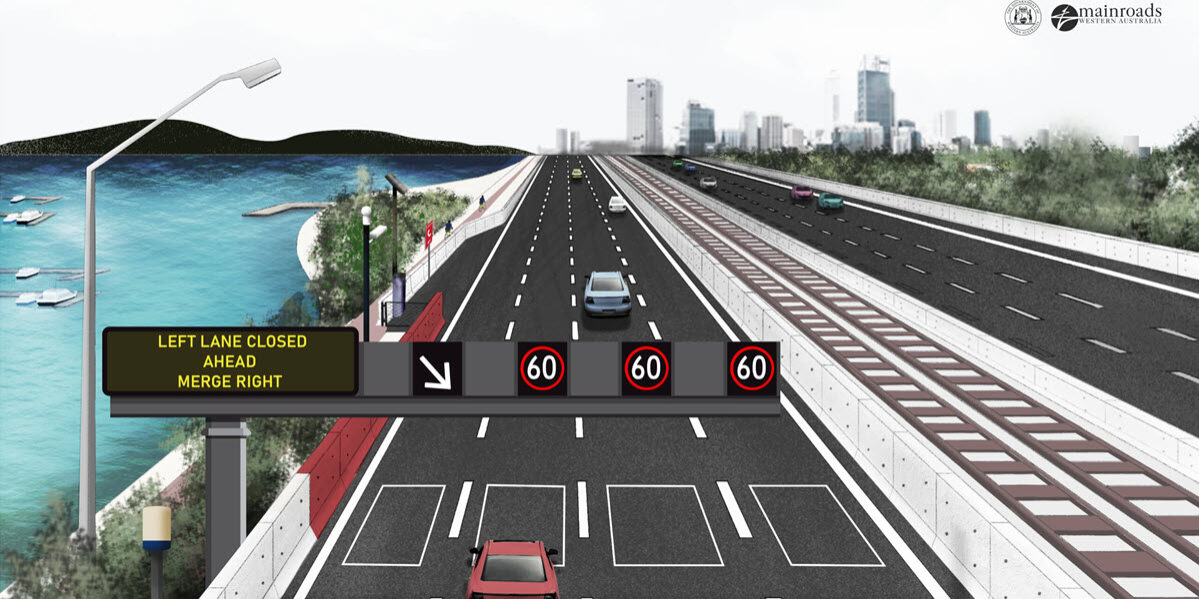
For learner drivers in Western Australia who are at least 16 years and six months of age and have been holding a learner’s permit for at least six months, the next step would be to sit for their Hazard Perception Test (HPT).
The HPT is a computer test that you need to pass your closest Department of Transport to get your provisional licence (P Plates). Passing the hazard perception test is not only a key requirement toward getting your licence, but it’s also about checking if you have the skills needed to identify road hazards and make safe decisions in response to real traffic situations.
If you plan to pass the HPT in Western Australia soon and are keen to know more about what the hazard perception test is, this guide should help familiarise you with it and prepare you for the actual test.
Hazard Perception Test – The Basics
The Hazard Perception Test is a computer-generated test that exposes a learner driver to different moving traffic situations. The practical driving situations are designed to gauge how quickly you can identify road risks or hazards and take appropriate action.
Even if you feel you don’t have enough computer skills to take the Hazard Perception Test, there’s no need to worry. The test is pretty straightforward, and there are Department of Transport staff available to explain what is expected of you before you start.
During the Hazard Perception Test, you will see some dashboard information (e.g., speed and indicator usage) on the screen. You’ll be given a rough idea of what’s expected of the driver (you) in each of the video clips during the test and are expected to respond to real traffic situations with safe driving decisions.
Since the Hazard Perception Test is primarily designed to measure the speed and precision of your perception and decision-making skills, there’s no need to stress over how you should actively control all aspects of your ‘vehicle’ during the test.
The only thing you need to look out for is the time pressure, as you have to be alert and act quickly the moment you identify the hazard in each driving challenge. After each scenario, you’ll be given an explanation of the right action to take given that situation.
Once you’re done with the HPT, you won’t know how well you did in specific areas of the test. Instead, you’ll get tips on what aspects of your driving need improvement for you to be able to pass the HPT.
Preparing for the Hazard Perception Test
Like any other type of test or examination, preparation is key if you wish to pass the HPT.
Adequate preparation will help you to pass the HPT, keeping your stress levels low. It’ll also give you a much-needed confidence boost so you don’t doubt yourself whilst making on-the-spot decisions during the Hazard Perception Test.
So, to ensure you get your best shot at passing or even acing the Hazard Perception Test, follow these tips:
1. Take Driving Lessons Prior to the Test
While your parents, older siblings or cousins can teach you how to drive in your neighbourhood or even during a weekend road trip, nothing beats taking formal driving lessons as part of your hazard perception test practice.
Learning from a driving instructor can make you a more safety-conscious, professional and efficient driver. It will also help you to make safe driving decisions and feel confident when driving in different traffic situations. Driving instructors know it’s their job to train you to become a skilful driver, so they will be honest and educational when highlighting any incorrect driving habits.
Most learner drivers agree that the training they receive from their driving instructors has a long-term influence on their performance on the road, exceeding just what’s required to pass the Hazard Perception Test.
To encourage learner drivers to take instructed driving lessons, the Australian Government initiated the Keys2drive program. In this program, learners get a free 60-minute lesson from a Keys2drive accredited driving instructor.
2. Practice With the Hazard Perception Test Simulator
Want to learn some practical driving tips before sitting the Hazard Perception Test?
The West Australian Department of Transport has an online Hazard Perception Test simulator available to all learner drivers in WA. The practise test includes a series of video clips and multiple-choice questions which will guide you through similar questions you’ll find in the HPT.
Before you take the test, keep practising with this HPT simulator until you get all or the vast majority of questions correct. This will help you to take the test and pass on your first attempt.
3. Focus on Learning to Identify Road Hazards Quickly
Although the Hazard Perception Test will expose you to a variety of real traffic situations, you’ll encounter many more types of road hazards in real life.
Road hazards include other drivers, pedestrians, wild animals, malfunctioning traffic signals, incorrect use of signal lights, road obstructions, puddles, potholes, wet weather road conditions and more. Of course, you also need to check yourself, including your driving speed and proper use of hand signals and lights.
While still learning to drive, you can also learn from other drivers, such as older siblings or your parents. Observe how they react to certain scenarios on the road and imagine what you would do if you were in the driver’s seat.
4. Know How to Prioritise Hazards
The Hazard Perception Test is designed to expose you to one specific road hazard at a time. However, real-life driving may require you to deal with two or more hazards at the same time, such as how to respond to a car crash or accident.
What matters here is how you prioritise each hazard, especially your ability to quickly perceive whether avoiding one could lead to a bigger problem.
For example, you would probably respond differently if, say, you see a bird on the road as opposed to a large animal like a kangaroo or a human being while you’re driving at the maximum speed limit.
The bird could probably fly to safety even as you drive at speed, while you may need to make a quick-second decision if what you see ahead is a large animal or person. You also need to calculate whether avoiding what you see ahead of you will endanger drivers behind you.
5. Keep Calm and Stay in Control
As a learner driver on the road, it’s natural to feel jittery during the Hazard Perception Test, especially when you’re trying to remember and apply all the lessons you’ve learned when learning to drive.
During the Hazard Perception Test, the most important thing is to keep calm. Don’t panic, but stay alert for upcoming road hazards. When you see one, make what you think is the right decision based on what you have learned.
Be ready for anything as you’re likely to encounter all sorts of hazards during the Hazard Perception Test. Most of all, avoid reacting too late as you’ll get penalised.
6. Rest Well and Attend the HPT Fresh and Confident
There’s probably no need to tell you, but please make sure you go to the Hazard Perception Test well-rested and fresh so you feel confident about taking it.
Make sure you don’t drink or take any substances that can put you on edge or cause you to have delayed reaction times. This includes medication that can make you nauseous or drowsy.
Time to Take the Hazard Perception Test
The thought of taking a test like the Hazard Perception Test will likely give you some test day nerves. However, with adequate preparation, you can take it with confidence and pass it with flying colours.
Better yet, share your concerns with us at Eclipse Driving School. We’re ready to help you ace your Hazard Perception Test and help you to pass your driving assessment first time.
Frequently Asked Questions
The way to pass the hazard perception test first time is to practice as much as you can. You want your brain and eyes to be wired up for it before you even start watching the clips because when we watch them our very first instinct is usually “get out of the way”.
It’s all about taking a few minutes to sit back and watch the video clips before you start.
If you pay attention, you’ll soon notice that many clips have more than one incident in them, so with careful observation, it should be easy to spot when these occur. You might find it helpful to keep an eye out for scenes that involve different types of cars stopping at lights or driving away from the curb, or pedestrians heading across the road.










